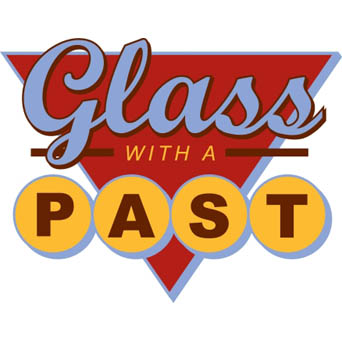A few years ago, I ran across a reference to mica and lusters. After I finally tracked some down, I discovered one of the most versatile glass tools that I’ve ever used. I LOVE this stuff! It isn’t hard to use, but there are a few things I’ve discovered that will make your life easier.
- Not all mica works the same
Be aware that not all mica colors work in kilns. Either buy a color you have experience with, OR buy from someone who has already figured out which ones work (like me), OR be prepared to do some testing.
2. Do tests, you’ll thank yourself later
This is my color test chart for a whole pile of mica colors. I use a wide piece of glass (sandblasted) and paint the mica colors on, then cap the center section and fire to a SLUMP temperature. This shows me what every color looks like both capped and uncapped. I do one of these for every color of glass that I use. I also did the exact same thing and fired it to a fuse temperature so I know what colors burn off at a higher fire.
3. Etch or sandblast the surface for maximum coverage
I’m sure you’ve heard that ‘mica must be capped’. Which is a fun rule, but has a whole bunch of exceptions, especially for people who are willing to take some risks. Mica works very well on the surface of glass, as long as you etch or sand blast the glass first. This gives the glass texture for the mica to stick to during firing. These are all bottle bottoms that have been fused on our bottle bottom molds, then etched, painted with mica and fired to a slump temperature.
4. Mix to the best consistency
For painting I prefer to mix 1 part mica to 4 parts medium, I use liquid hairspray for regular painting, and A14 medium (Thompson Enamel) for screen printing. The mica settles out quickly, so stir regularly to keep the paint mixed.
5. Thin even coats are best
Mica lusters are essentially inert by themselves, so they don’t melt into the glass, they simply stick to the hot glass during firing. Only the layer touching the glass will stick, all the extra will wash off. One of the main uses for mica in industry is as an insulator, thick coats tend to trap heat in the glass and cause rippling and rough spots. Thin even coats will give the best end result.
6. Use safety precautions.
Mica is a superfine powder and contains silica. It’s not good for your lungs to inhale stuff like that. Use the same precautions as working with powders.
If you’re feeling brave and want to give mica painting a try, I have a sampler set of my favorite 8 colors over in the shop, and we have several tutorials featuring mica paint.
Fused Bottle Glass Gecko with Mica
Fused Bottle Bottoms with Mica (and fiber paper)
- Pin Me!
- Mica is a silicate, use a respirator!
- Requires firing schedule knowledge








